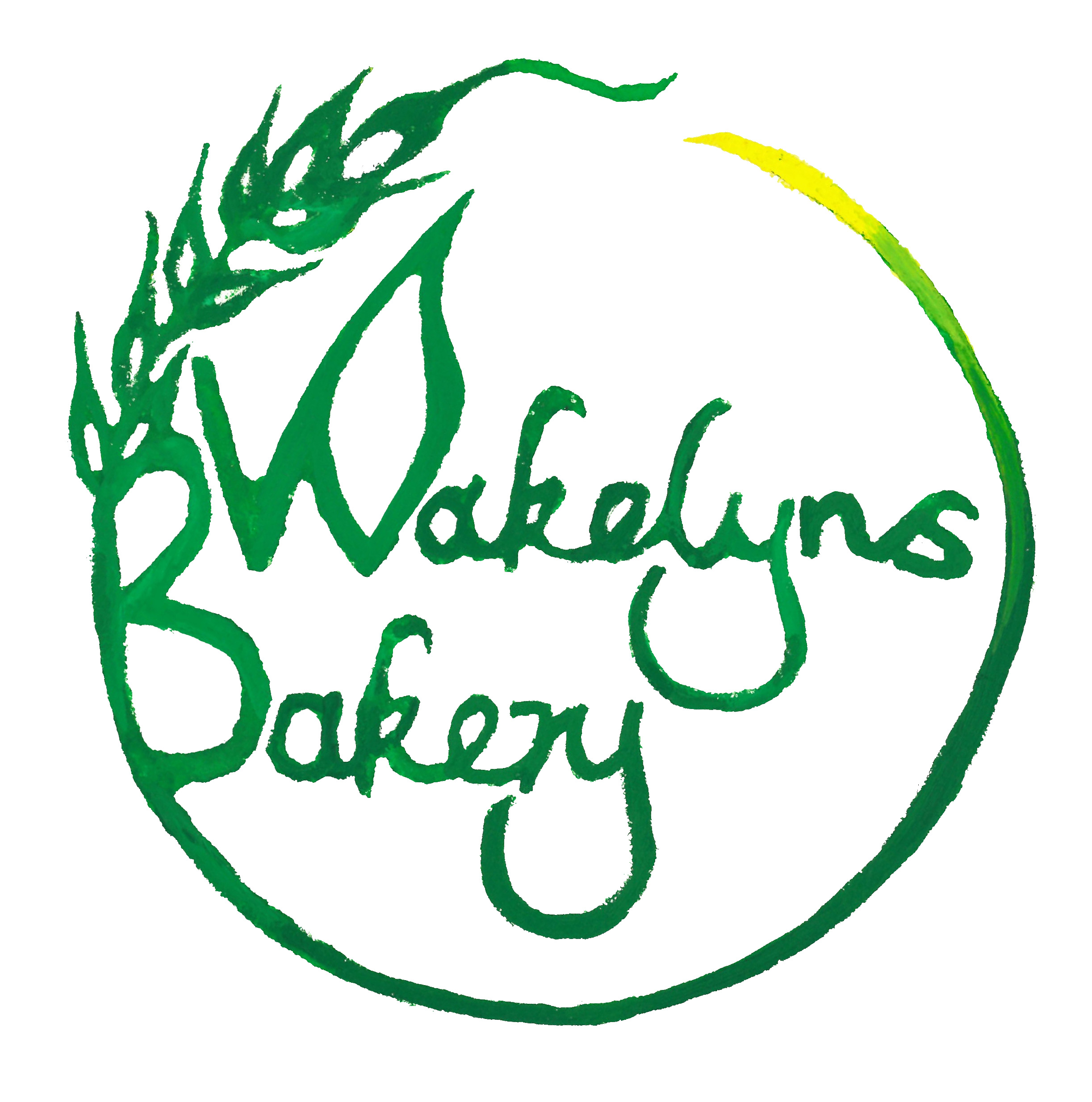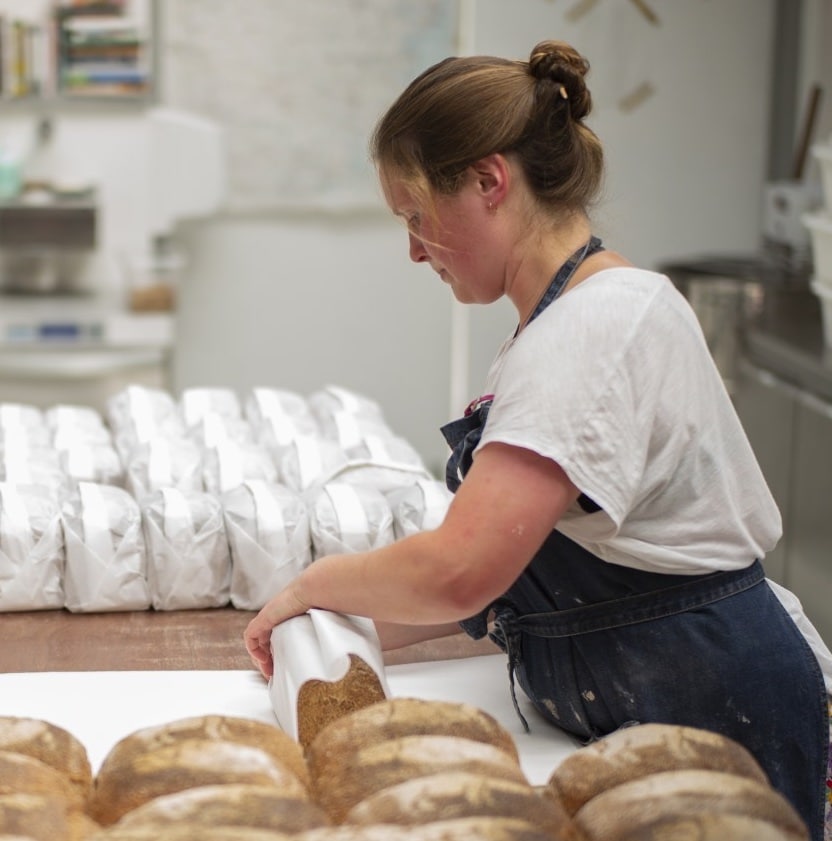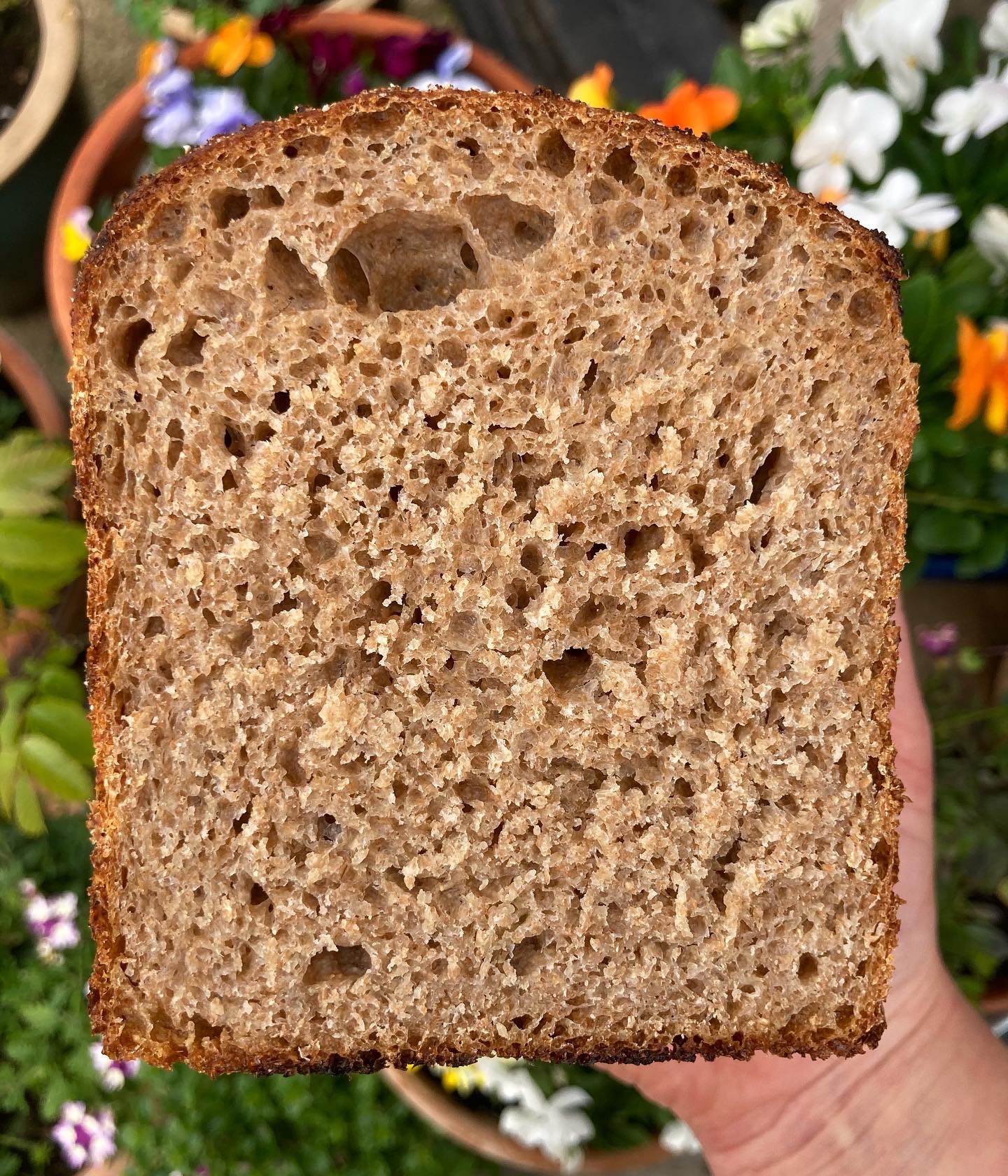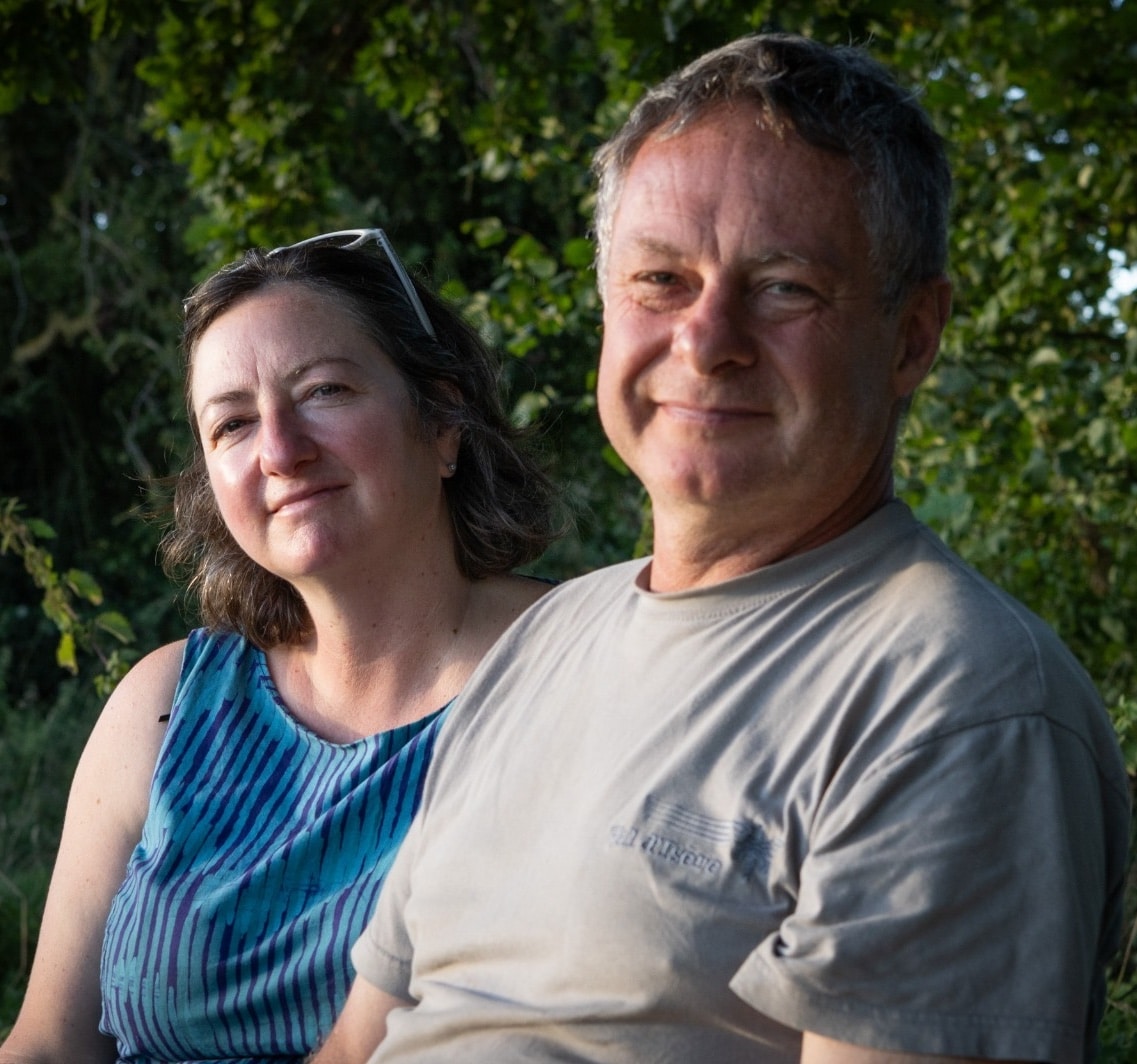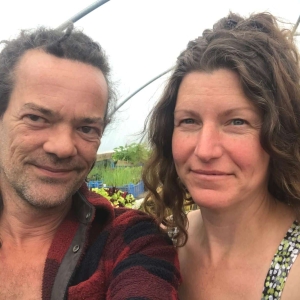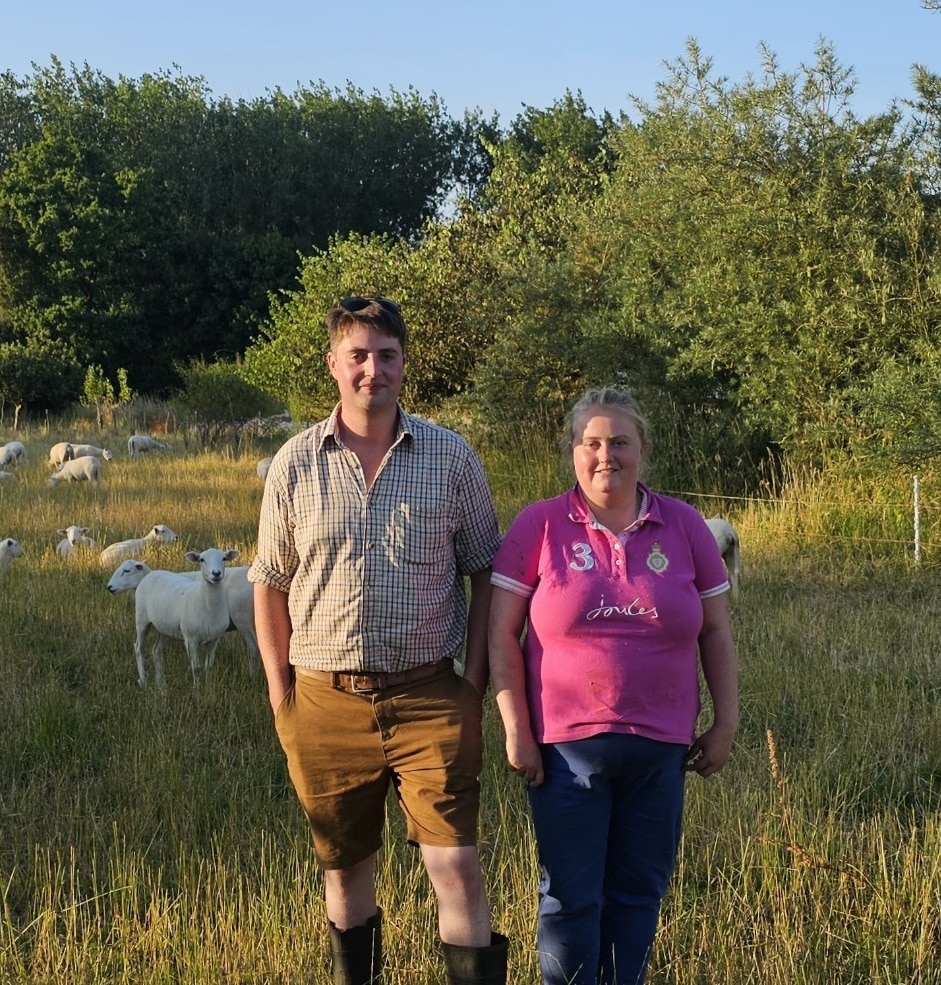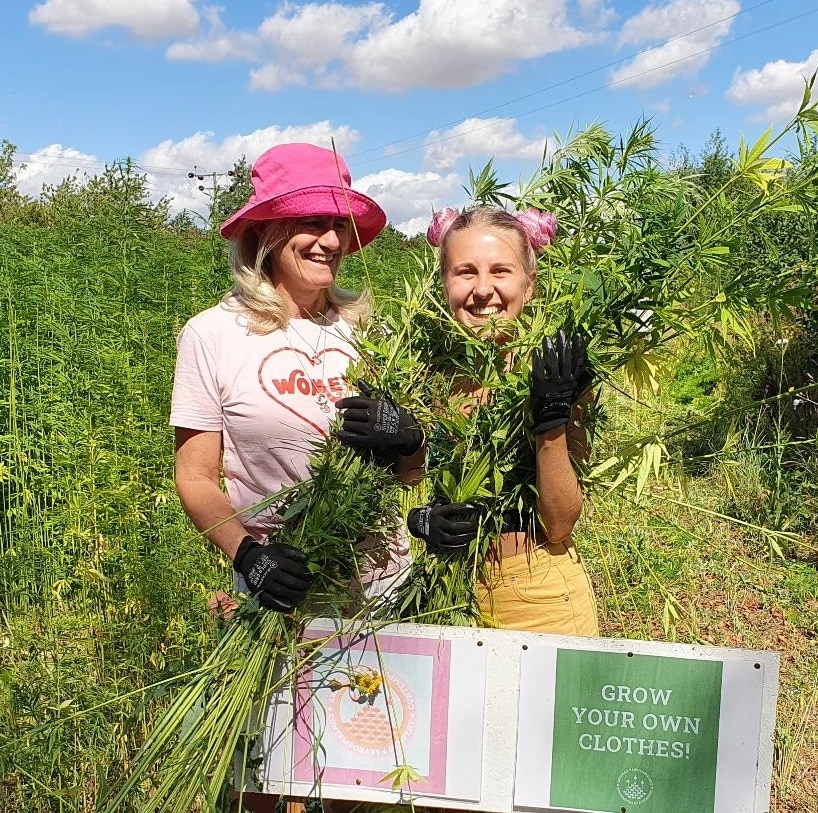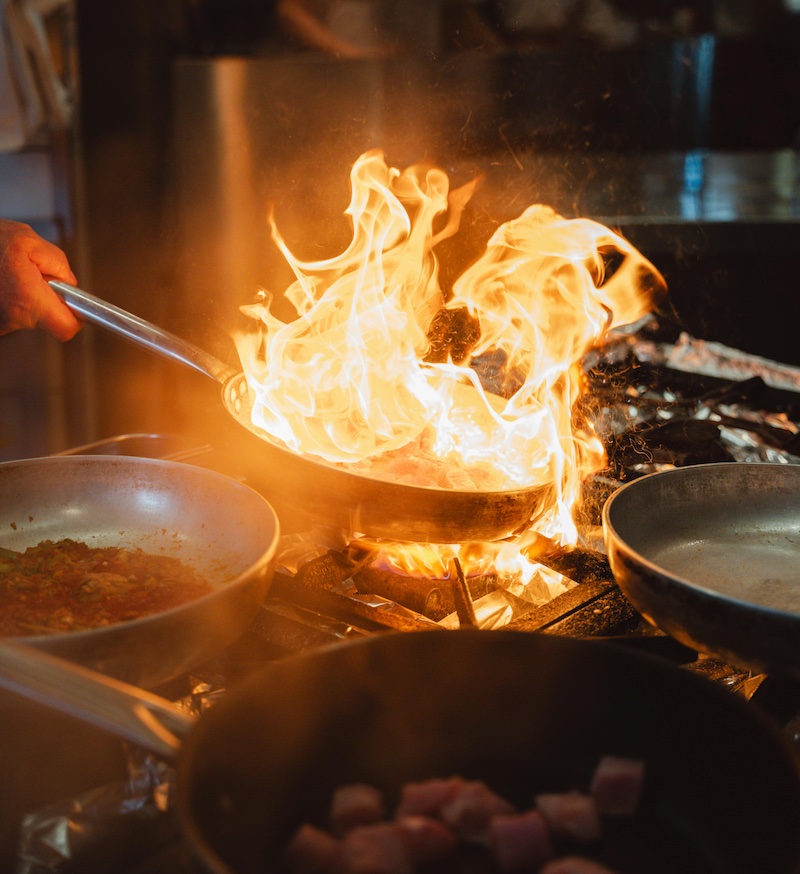As cooks and bakers, we have a role to play in making food grown with care for the Earth, or agroecologically, more readily available and accessible; spreading the word about that food; sharing our knowledge and inspiring people to cook and bake healthily, diversely and happily and source ingredients sustainably and equitably. We share a lot of the ways and methods in which we cook on our social media so do follow us there for some other ideas too.
‘Musicians and cooks are responsible for the most pleasure in human life,’ Fran Lebovitz.
Once we have wonderful real food, we need to know how to cook it. Once we have knowledge, what else is there to do with it but share it! Here are a few recipes from our bakery. We hope that you enjoy them.
Wholemeal ‘YQ’ ORC Wakelyns Population wheat sourdough tin loaf
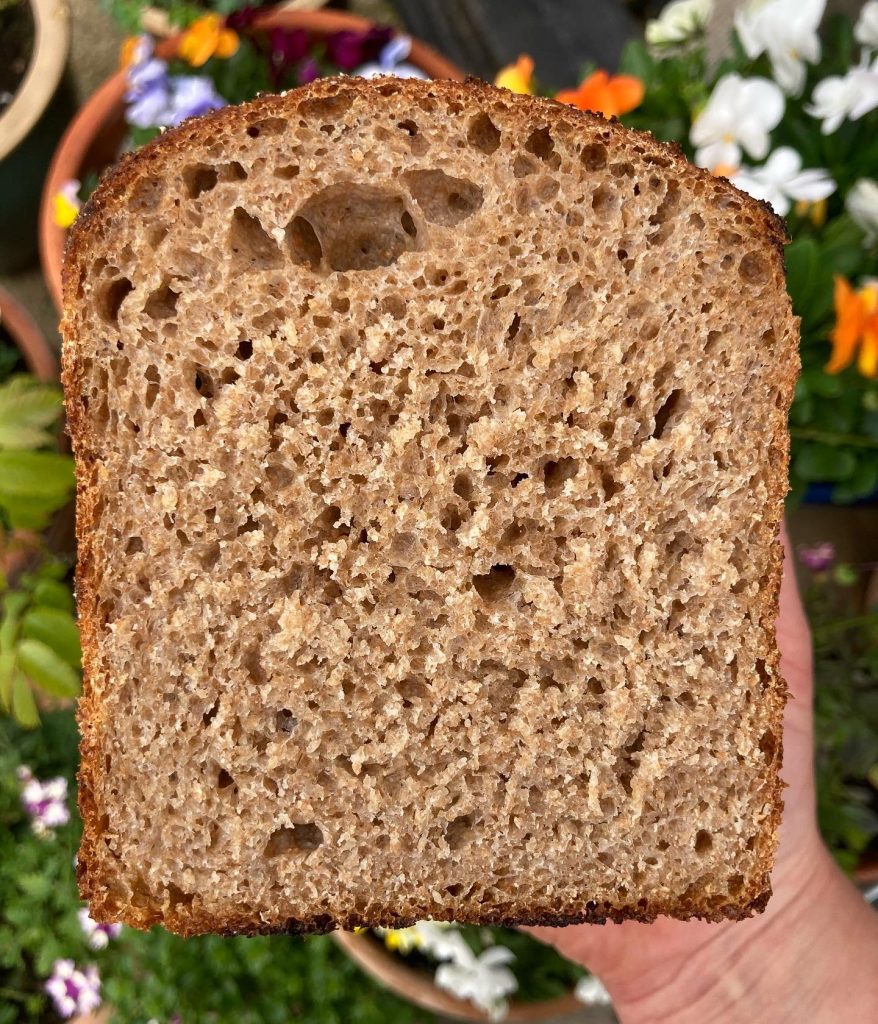
We’re so happy to share this recipe – or in our bakery and other bakeries, bread recipes are called, ‘formulas’ – for our favourite loaf. It smells like honey; you can toast it; sandwich it; butter it; everything it! We love it and we hope that you do too, and enjoy having this loaf of nourishing flavourful real bread at the centre of your table.
Recipe for 1 YQ tin loaf
To build the starter:
75g Wakelyns YQ population wholegrain wheat flour
25g active starter
35g water at room temperature.
Mix all the ingredients together until well combined, cover and leave to ferment overnight, or for at least 10 hours.
To make the dough:
335g water at 21 degrees C, a little warmer if your house is cold, a little cooler if your house is warm!
130g starter from above
425g Wakelyns YQ population wholegrain flour
10g sea salt
MIX :
In a large mixing bowl, combine all of the ingredients and mix using one hand until well combined. Carry on mixing for around 5 minutes until the mixture starts to feel springy or “doughy” as opposed to “cakey”.
KNEAD:
Lightly dampen your work surface and turn the dough out on to it. Roll your shoulders back, stand with your feet shoulder width apart. and start to knead or add your energy to the dough. Depending on your method, you will need to do this for around 15 minutes. It may feel sticky to begin with, but keep going! Try not to add any extra flour or water. Over time it will start to become an elastic, silky and smooth dough. You can test the strength of the dough by checking to see if a “membrane” has formed when you gently stretch out a piece of the dough, as shown in the picture below:
PROVE:
Check the temperature of the dough, it should be at around 21-22 degrees C.
Lightly oil your mixing bowl. Pull the dough across your surface using a tucking motion and shape it into a round, with a slight smooth tension forming on the top of the dough. Place this (smooth side down) into your mixing bowl. Cover with a damp tea towl or a lid, and leave in a cool area, around 21 degrees C, to bulk prove for 2 hours and 30 minutes.
30 minutes in to the bulk prove, give the dough a “stretch and fold”. With wet hands, gently lift one side of the dough and give it a light stretch, and fold it into the centre. Work your way around the dough stretching and folding until you get back to the beginning. 30 minutes later, repeat this process.
SHAPE:
After the bulk prove, turn your dough out on to a lightly dampened work surface and gently shape it into the tin. Not much “shaping” is required here, as the tin will do most of the work! But try to ensure that the dough fits well into the shape of the tin, and the top is relatively smooth (but please don’t worry if this is not the case!). Leave the tin somewhere warm for around 3 hours for it’s final prove. It may take more or less time depending on the room temperature. You may need to lightly splash/spray the top with water to prevent the crust from drying out. It should rise all the way to the top of the tin before going in the oven!
BAKE:
Bake at 230 degrees C for 35 minutes until a deep brown crust has formed and the centre of the loaf has reached 97 degrees C. Patiently wait until it has fully cooled down before you slice it. Difficult… but worth it!
Thursday 17th June 2021. When I first started our website in January 2021 before the bakery opened in April 2021, I hoped to update this page with recipes as often as I could. With the bakery opening, life inevitably got a lot busier and other work has taken priority. Maisie and I have also realised that the more we cook with what is around us, the less we use recipes. We are being taken along on an abundant and flavourful voyage of the seasons, the trees at Wakelyns, the hedgerows, the meadows and local farmers’ produce. The food that we have to hand, that we can see, smell, feel and touch dictates what we decide to cook. We are sensitive to our surroundings and we want to honour the produce that the Earth gives us right here. We feel that this way to cook goes hand-in-hand with rediscovering our food culture and history, regional food and diverse food from one village to the next. Today, our diets, like the fields around us, have become monoculture and our health is paying the consequences. Diverse food brings health and wellbeing to us and our Earth.
Almost four months on from writing our first recipe, I’ll add another one today. But I urge you to get creative with the food you have around you. It tastes better than food that has flown halfway around the world and it will do you better.
In the bakery we have our base recipes for our bread dough, our pastry, some cakes, and then throughout the year we adapt them with what is in season. In January we’ll fill a quiche shell with the squash from October, in June it will be full of the first broad beans, and so on. If you want to learn more about how we adapt our recipes throughout the seasons, please do come to one of our courses at the bakery, we’d love to see you!
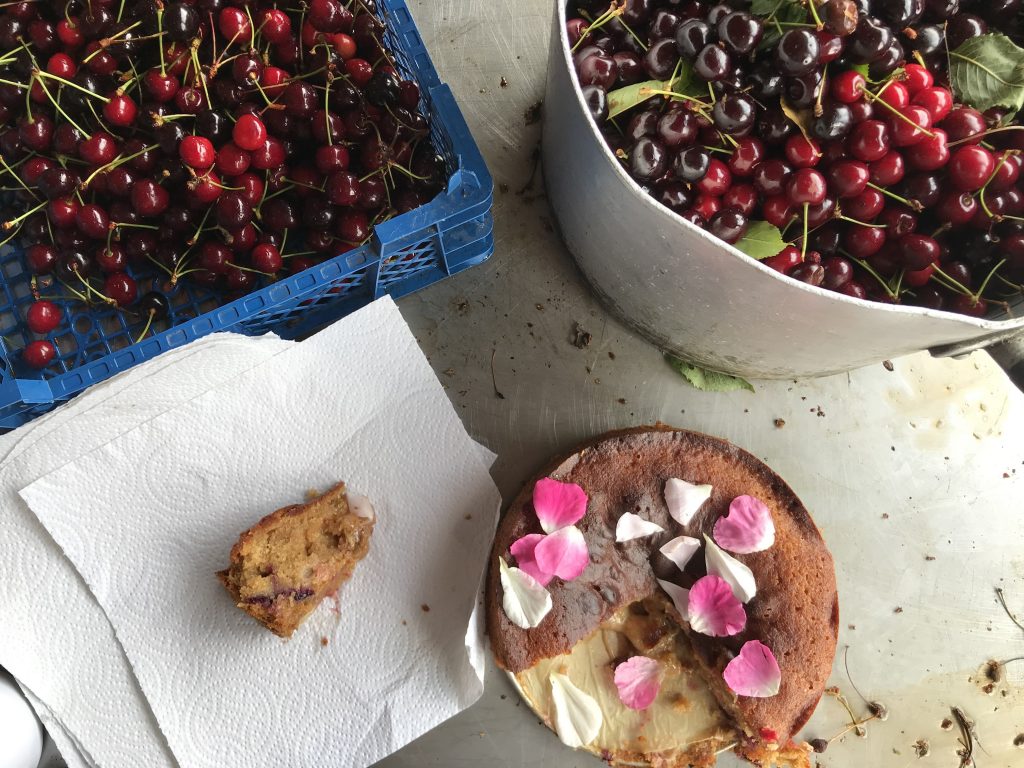
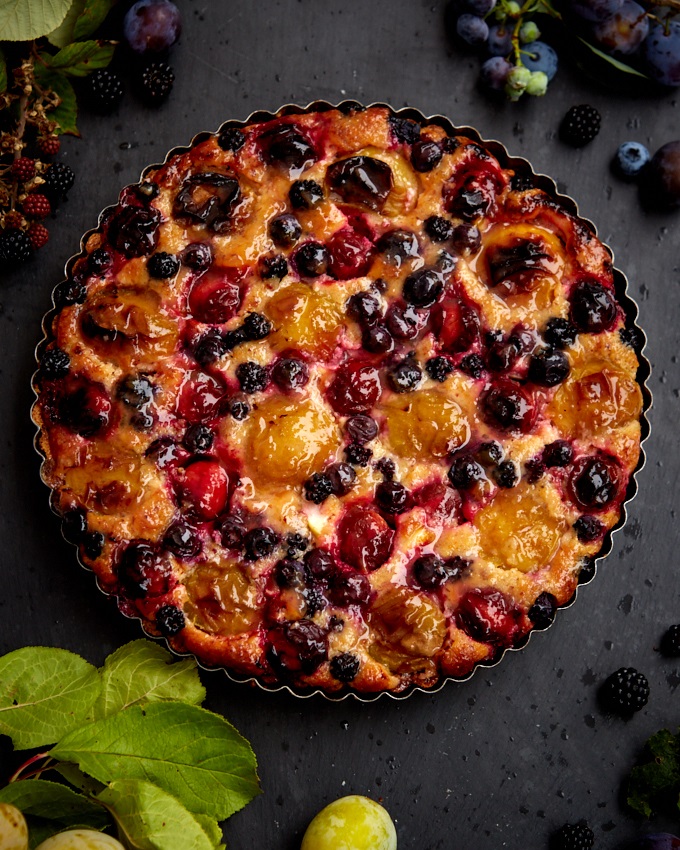
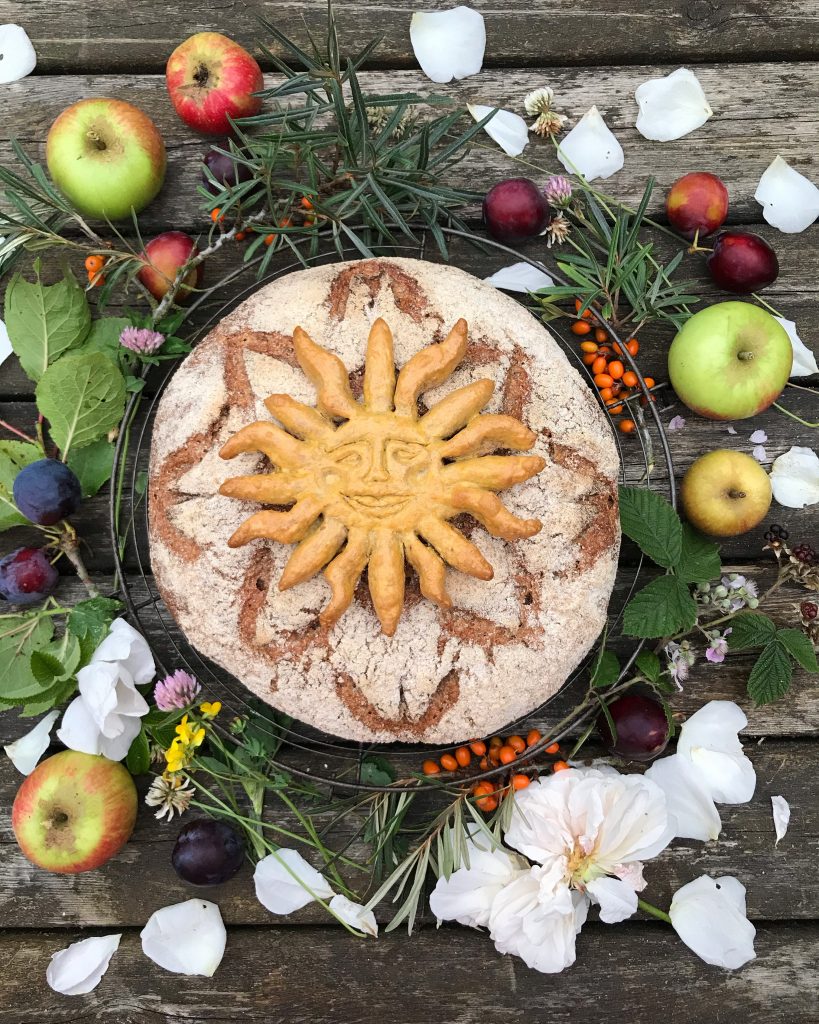
Buckwheat and cobnut biscuits made with George’s wholemeal buckwheat flour grown at Fobbing Farm in Essex, and Alexander’s Kentish cobnuts
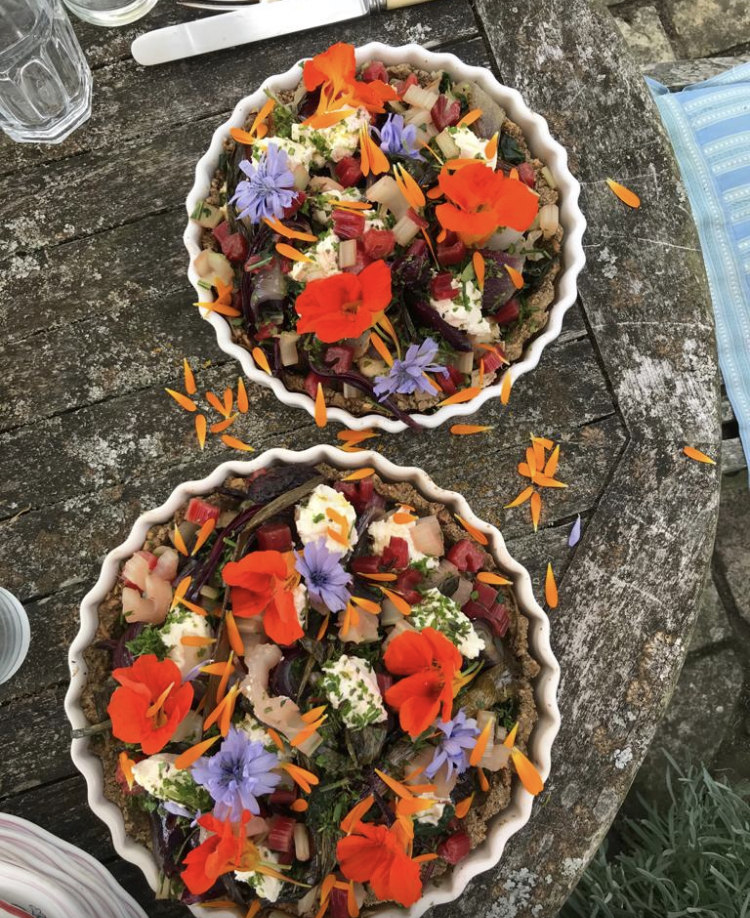
This photo shows the biscuit dough being made into a tart shell filled with summer vegetables and local cheese. Try it!
270g toasted cobnuts
475g George’s buckwheat flour
2 tsp sea salt – 3 tsp if using unsalted butter
200g salted butter
12 tbsp water to bind
Chop or magimix the cobnuts but leave with some texture/ larger pieces. Add flour, butter, salt and water and combine. Roll to half cm thick-ish, cut into small biscuits and bake at 180oC for 10-15 minutes or until golden brown.
These are so delicious by themselves or with cheese. We love them with our Wakelyns cherry jam and St Jude curd cheese.
Squash, YQ and Hodmedod’s mix #1 BROTH seeded sourdough scones with camelina, hemp and flax
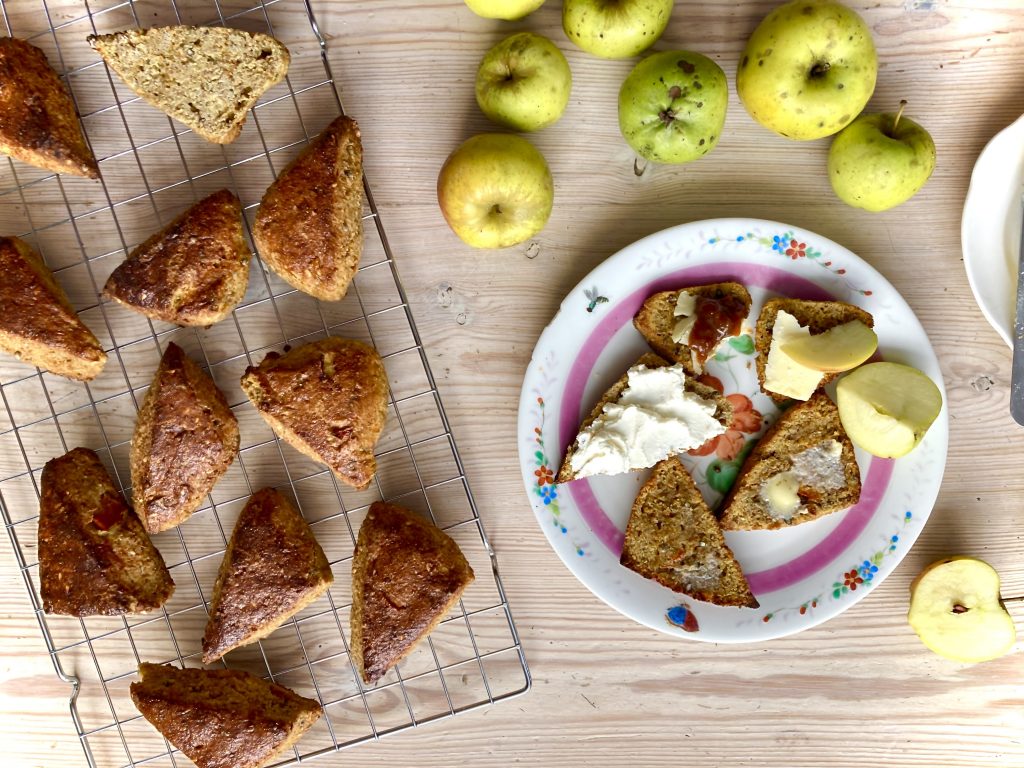
There are still lots of squash in storage from their winter harvest. Do try them in these scones for another way to cook with them. Using a sourdough starter instead of bicarbonate of soda might sound like a faff but it really isn’t. The small extra effort and time is worth it, and it’s important to make this time to cook for ourselves. It oomphs up all the flavours, makes all the goodness of the grains and pulses more bioavailable and the scones more easily digestible, as opposed to the fast-reacting soda, so you could probably eat an extra one and still feel very happy! And who knows what’s in the weird white powder eh! Try adding a good cheddar or other strong-flavoured cheese for cheese scones. Thank you beautiful Kim at Small Food Bakery for your help with the recipe.
Sweet sourdough starter
100g wholegrain YQ flour, 100g water, warmish, 100g starter, a good active one fed at regular intervals and preferably the night before, 15g unrefined golden sugar
Squash scones
200g mix #1 BROTH, 200g wholegrain YQ flour, 4g sea salt, 200g unsalted butter, we like Fen Farm, cold and cubed, 50g local honey, 90g seeds, a mixture of Hodmedod’s flax, camelina and unhulled hemp is great, 200g cooked squash, mashed with a fork, 145g starter from above
To bake the scones in the afternoon ready for tea or a light supper with cheese, apples, chutney and a salad, make the starter between 7 – 8am that day.
For the starter, mix all of the ingredients and set aside in a warm place for 3.5 hours.
Mill the broth mix. Mix the broth and YQ flour with the salt. Add the butter and rub into the flour with your fingertips until it resembles breadcrumbs. You can do this in a mixer fitted with a paddle too. Add the honey, seeds, squash and starter and mix well to form a dough.
Line a large baking tray with parchment paper. On a floured surface, roll out the dough until about 2 – 2.5cm depth. Cut into rounds or triangles, you want to get about 14. Place onto your prepared tray and let them rise in a warm place for 4-5 hours, until looking plump and risen by about half of original size.
Preheat the oven to 200oC. Glaze with egg wash and bake for 12-15 minutes until golden brown on the top and bottom.
Eat with butter, cheese and chutney.
More recipes coming soon. Yum yum!
